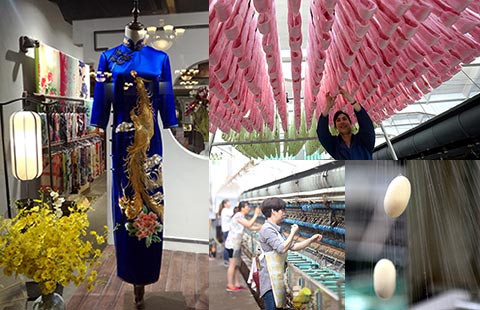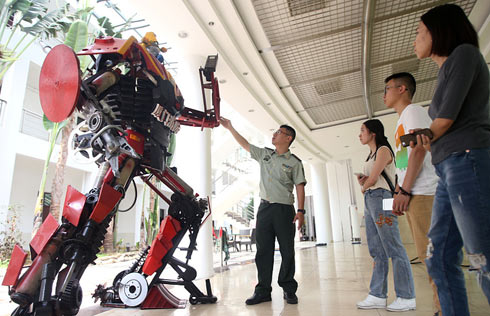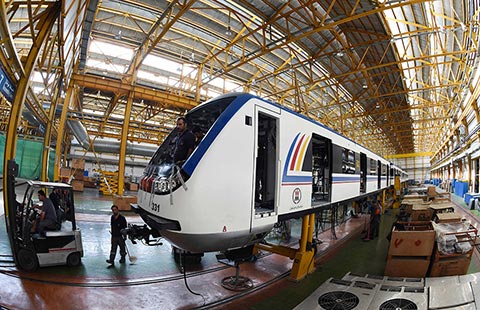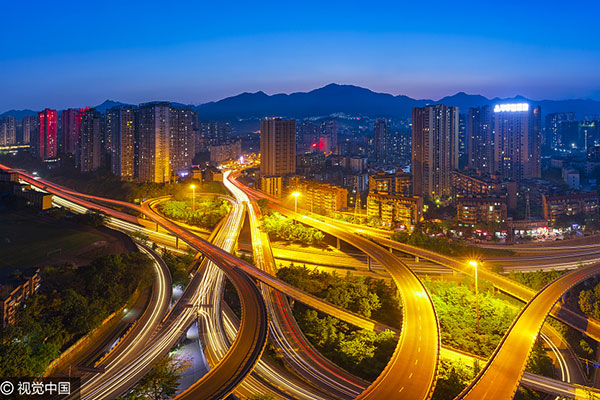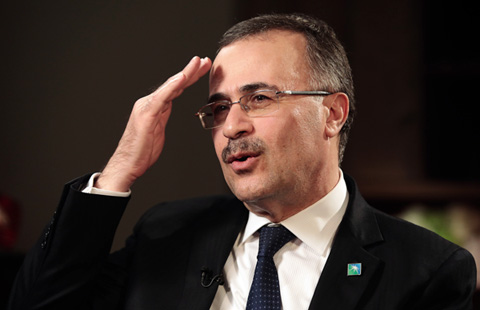Chinese economy shows firming signs amid restructuring efforts
BEIJING - A slew of upbeat economic data pointed to latest restructuring achievements and provided fresh stabilization signs for the Chinese economy.
Highly-watched economic figures released Monday, including industrial output, retail sales, fixed-asset investment and housing sales, confirmed the message that the ongoing growth model transitioning is providing new impetus to the world's second largest economy.
In the first four months, total retail sales of consumer goods rose 10.2 percent year on year, 0.2 percentage points faster than the growth in the first quarter, buttressed by vigorous consumption growth in rural areas and online shopping, the National Bureau of Statistics (NBS) said Monday.
Retail sales rose 12.1 percent in rural areas during the same period, outpacing urban areas, where retail sales climbed 9.9 percent. Online retail sales surged 32 percent year on year in the first four months.
"The figures indicate continued growth of domestic consumer demand, which was partly driven by consumption upgrades and new business patterns such as online sales," said NBS spokesperson Xing Zhihong.
China is moving toward an economy boosted by consumer spending, innovation and services, reducing reliance on investment and exports of low value-added goods and narrowing the income gap between urban and rural dwellers.
China's GDP growth in Q1 stood at 6.9 percent, up slightly from 6.8 percent in the previous quarter, with 77.2 percent of that driven by consumption, 12.6 percentage points higher than the 2016 level. The service sector rose 7.7 percent year-on-year, outpacing a 3-percent increase in agriculture and 6.4 percent in secondary industries.
Property investment growth remained robust and the inventory trended down. Investment in real estate development increased 9.3 percent year on year from January to April, 0.2 percentage points faster than the growth rate registered in the first quarter.
At the end of April, 674.7 million square meters of property remained unsold in China, decreasing by 13.4 million square meters from the end of March.
In a similar vein, China's value-added industrial output rose 6.5 percent year on year in April, 0.5 percentage points higher than the same month last year, while profits at industrial enterprises above the designated size surged 28.3 percent year on year in the first quarter.
High-tech and low-carbon products witnessed faster production growth in the first four months, with the production volumes of industrial robots and solar batteries surging 51.7 percent and 18.2 percent, respectively, Xing said at a press conference.
"China's transition to slower but structurally rebalanced growth continues," the World Bank said in a recent report, noting that economic growth will continue to moderate as capacity is cut and credit kept on a tight leash.
As of Monday, 31.7 million tons of steel and iron capacity and 69 million tons of coal capacity have been cut, accounting for 63.4 percent and 46 percent of the annual targets, respectively, Xing said.
China's investment in fixed assets rose 8.9 percent year on year in the first four months of 2017, easing pace from 9.2 percent in the first quarter but reflecting the ongoing restructuring of the economy, as investment growth rate in the service sector far exceeded the industrial sector.
Investment in the industrial sector rose only 3.5 percent in the first four months, a main drag on total investment growth, while investment in the service sector rose 12.1 percent.
The robust economic growth momentum has supported job creation and new business registration. Some 4.65 million new jobs were created in the first four months, 220,000 more than the same period last year, and 556,000 new companies were registered in April alone.
China still has a long list of reform tasks, many intertwined with one another, which when added to global risks like U.S. interest rate increases and protectionism makes policy-making tricky, analysts said.
"The economy continued to stabilize and positive factors were increasing. But both domestic and international environment is still complicated and structural contradictions have not been fundamentally eased," said Xing.
China should continue to reduce excess capacity, curb credit, lower debt leverage in the corporate sector and reform state-owned enterprises, said Sudhir Shetty, chief economist of the World Bank's East Asia and Pacific Region.
"Against the backdrop of the ongoing financial regulatory tightening, we may see a 'soft-patch' of economic data in the next couple of months amidst reduced inflationary expectations and rising risk premium," investment firm China International Capital Corporation said in a research note.






